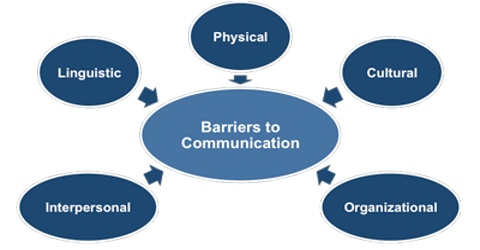Individual Barriers are the personal factors of both the sender and receiver may act as a barrier to effective communication.
Individual Barriers in Communication Process
Individual Barriers: Communication Barriers created by the sender and receiver are known as individual barriers. This type of Barriers relates to the factors that are personal to the sender and receiver and act as a hindrance in the communication process. If a superior thinks that an exacting communication may negatively affect his authority, he may restrain such communication.
Such barriers include the following:
- Differences in personality:
Personality is the set of attributes that define a person. Every person holds a distinct personality. This individual nature of personality acts as a barrier to communication. For example – if this attitude is unfavorable, there is a bigger chance that messages would not flow sufficiently from and/or to superiors.
- Perceptual differences:
Perception is the unique way in which people respond or interpret in an object. The difference in perception is a very common problem in effective communication. It happens because people perceive or interpret a situation differently.
- Fear:
Fear of reprisal or attack, fear of criticism for knowing very little, etc., may create problems in communication. As such, managers, in general, try to withhold the information coming down the line or going up as regular passing of information may disclose their weakness.
Superiors feel, whether accurate or if not, that they are overburdened with the work and they have time to talk to their subordinates.
- Stereotyping:
Stereotyping is generalizing about a class of people or events that are widely held by a given culture. In the case of stereotyping, people develop common statements and mindsets about others. This orientation exposes itself to such statements and mindsets. For example, “All used car salesmen are dishonest” or “All foreign recruiting agents are liars”. Such all-inclusive perceptions not only are seldom correct but they also block mental activity that is necessary for successful communication.
- Halo Effect:
The halo effect is the tendency to use a general impression based on one or a few characteristics to Judge other characteristics of that same individual. For example, a manager might identify one trait of an employee, such as an excellent attendance record and perceive that the employee’s productivity and quality of work must also be outstanding.
- Lack of Awareness:
Sometimes, superiors may lack the awareness about the consequence and value of communication in dissimilar directions in general or of the exacting subject matter. In such a case, the communication flow is blocked. Communication through bypassing might, sometimes, be essential but superiors care for this as the waiting of their authority and block the flow of communication.
- Lack of Confidence in Subordinates:
Superiors usually perceive, correct or otherwise, that their subordinates are less proficient and capable, they are not able to recommend or inform superiors or they may not have some information coming downwards.
- Ignoring Communication:
Sometimes superiors deliberately and consciously ignore the communication from their subordinates to keep up their significance. This works against the eagerness of subordinates to communicate.
















